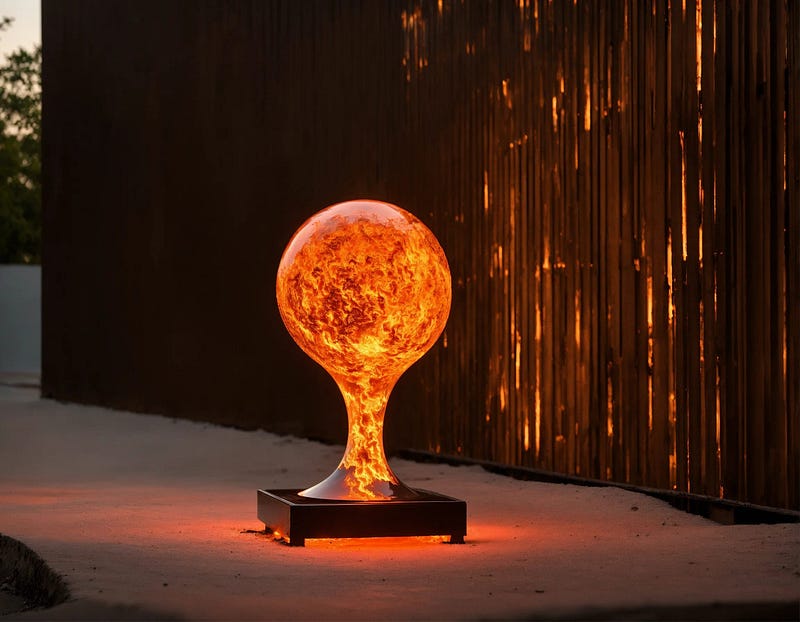Innovative Material Resists 1000°C Heat and UV Light
Written on
Chapter 1: Understanding Thermal Radiation
Thermal radiation is a crucial element in physics, characterized as the electromagnetic radiation emitted by a substance due to its temperature. All objects above absolute zero emit this type of radiation, with its intensity and wavelength determined by the object's temperature and emissivity. In the context of renewable energy, thermal radiation presents an untapped resource that can be harnessed through various technologies to generate electricity and heat.
Concentrating solar power (CSP) systems serve as an excellent example of this application. These systems utilize mirrors or lenses to focus sunlight onto a receiver, heating a fluid such as water or molten salt to elevated temperatures. This heated fluid drives turbines connected to generators, producing electricity. CSP systems effectively capture solar thermal radiation and convert it into usable energy, providing a sustainable alternative to fossil fuels.
Additionally, thermal radiation is pivotal in thermophotovoltaic (TPV) systems, which directly convert thermal energy into electricity using photovoltaic cells tailored for specific wavelengths emitted by high-temperature heat sources, like the Sun. TPV technology shows promise for efficient electricity generation, especially in remote or off-grid settings.
Moreover, thermal radiation plays a role in passive solar heating systems found in residential and commercial buildings. Materials with high thermal mass and strategically placed collectors can capture and store solar thermal radiation, reducing dependence on conventional heating methods and lowering energy costs associated with electricity production.
Section 1.1: Breakthrough in Material Science
Researchers at The Korea Institute of Science and Technology (KIST) have recently made significant strides in the development of refractory materials. Spearheaded by senior researcher Jongbum Kim, the team at the Nanophotonics Research Center has engineered a unique material capable of managing thermal radiation even at extreme temperatures of 1,000°C and under intense ultraviolet light.
This groundbreaking material, known as lanthanum-doped barium stannate oxide (LBSO), is created as a super-thin film at the nanoscale through a technique called pulsed laser deposition. Unlike conventional materials such as tungsten or nickel, which tend to corrode under high heat, LBSO retains its functionality even in harsh conditions. The researchers conducted tests at temperatures reaching 1,000°C and under powerful UV light, confirming the material's stability.

Section 1.2: Implications for Energy Generation
The team has utilized LBSO to develop a specialized thermal emitter featuring a layered design. This emitter effectively emits infrared light and remains stable when subjected to heat or light. Its promising properties indicate potential applications in technologies such as TPV power generation, where the conversion of heat into electricity is essential. The LBSO material can transfer thermal radiation to the photovoltaic cell without requiring additional protective measures against air, suggesting a path toward more efficient and reliable energy generation in the future.
The researchers are optimistic that LBSO could be applied beyond thermoelectric power generation and recycling waste heat from industrial processes. Its remarkable UV resistance also makes it suitable for extreme environments, such as space and aviation, where intense sunlight exposure poses challenges.

The full research findings were published in the Journal of Advanced Science.